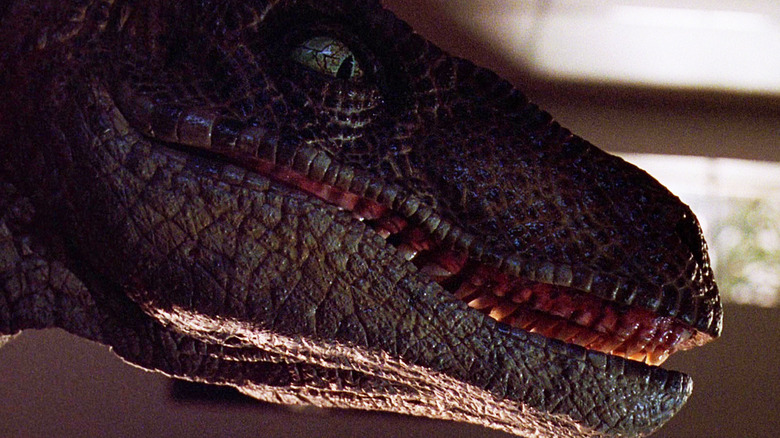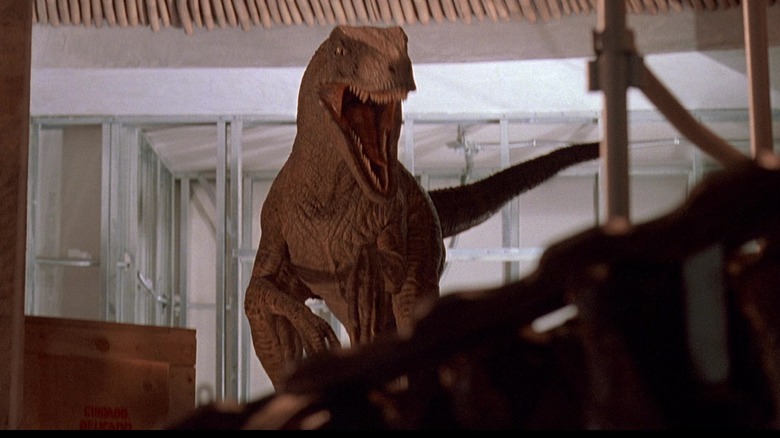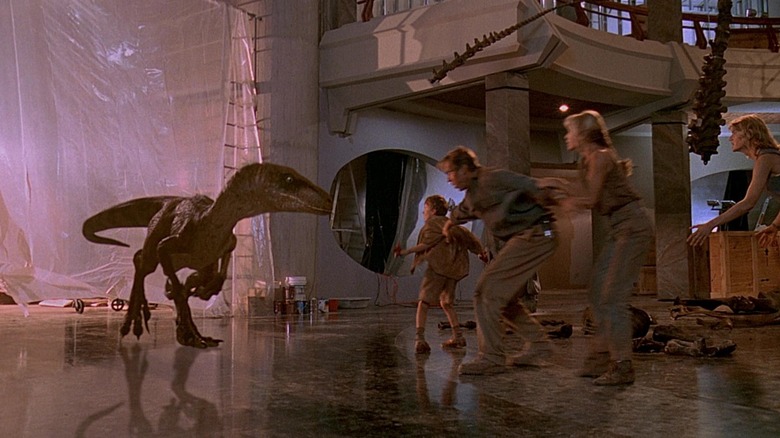
Dinosaurs have changed since we were kids. Having a four-year-old son means I’ve recently delved back into the world of these prehistoric beasts, much to the delight of my inner child and the dismay of my wife. I’m here to tell you that we’ve been lied to. Not intentionally, of course. But it turns out scientists just didn’t have all the facts when ’90s kid were busy growing up on “Jurassic Park.”
If you happen to be one of those kids, you’ll surely be slightly taken aback to find out that T-rex was not, as Steven Spielberg would have had us believe, entirely covered in scales, but at least had some feathers. More specifically, as The New York Times reported in 2019, T-rex are now thought to have had patches of feathers “for display.” What’s more, all the way back in 2007, a study confirmed for the first time that Velociraptors were also feathered dinosaurs, with scientists noting “clear indications of quill knobs” or “places where the quills of secondary feathers, the flight or wing feathers of modern birds, were anchored to the bone with ligaments.”
So, at least in the case of raptors, those reptilian beasts that adorned our lunch boxes and lined our toy shelves weren’t actually all that scientifically accurate in terms of their outer appearance. Neither is Steven Spielberg’s seminal dino action adventure. “Jurassic Park” may have changed movies forever, but its rendition of velociraptors in particular is, in 2024, outdated. (In fact, the raptors in “Jurassic Park” were never all that realistic even when the film debuted back in 1993.)
Not that any of this matters. The movie remains one of the greatest action adventure films of the 20th century, and the specific physiognomy of raptors doesn’t take away from the movie’s relentless pace, cutting-edge CGI, and overall Spielbergian mastery. But for those who wonder what a scientifically-accurate “Jurassic Park” would look like, there is, of course, the internet, which has now given us a glimpse at what the movie could have been were it based on more recent archeological findings.
Scientifically accurate ‘raptors’ finally make it into Jurassic Park
YouTuber CoolioArt took the liberty of toying with Steven Spielberg’s classic by rendering 3D models of feathered Velociraptors and inserting them into the movie. More specifically, the VFX artist used 3D graphics software Blender to create accurate 3D models of dinosaurs known as Deinonychus, which served as the actual inspiration behind the “raptors” in “Jurassic Park.” Real Velociraptors were actually much smaller, reaching the size of a large chicken or fox, but Spielberg and company took their inspiration from the much larger Deinonychus when crafting the look of the movie’s raptors.
Thanks to CoolioArt, who posted his most recent creation on Twitter/X, we can now see how it might have looked if the “Jurassic Park” cast were menaced by accurately-rendered Deinonychus during the climactic scene in the park’s crumbling welcome center — one of the greatest moments in “Jurassic Park.”
I did it again!
Jurassic Park with accurate raptors, a short part 2#jurassicpark #blender3d pic.twitter.com/LKyGsNiLBa
— CoolioArt (@Coolio_Art) January 5, 2025
It follows a previous video from the VFX artist, who also added his scientifically-accurate “raptors” into the famous kitchen scene (which was even more dangerous than it looked), wherein Lex (Ariana Richards) and Tim Murphy (Joseph Mazzello) are hunted by the dinos before trapping one in the freezer.
Jurassic park with SCIENTIFICALLY ACCURATE Raptors!
[Full video linked below]#jurassicpark #jurassicworld pic.twitter.com/2nHdZ6NiO6
— CoolioArt (@Coolio_Art) December 24, 2024
For those interested, CoolioArt also strongly hints that an accurate model of the T-rex is forthcoming.
The debate around realistic raptors in Jurassic Park
Did we need a scientifically-accurate representation of Deinonychus in “Jurassic Park.” Of course not. Is it neat to see how such a thing would have looked? Of course. That should really be the end of it, but this is the internet, and CoolioArt has stoked a diverse range of responses with his recent videos, from users commending the creator on doing “a job the studio should have done already” to those who took issue with the excessive “feather coverage” on Coolio’s 3D models. Then, of course, there’s the hotly-debated topic of whether the movie’s dinosaurs are even supposed to be accurate in the first place, since they are all technically hybrids.
Other users debated whether the newly-modeled “raptors” were more or less terrifying than the original versions. While there’s no doubt the skull heads of these 3D models are sinister in their own way, their inherent fluffiness is inescapably less scary than the scaly beasts of Steven Spielberg’s original vision — which is kind of important considering the raptor scenes in “Jurassic Park” are some of the film’s scariest.
Regardless of what users had to say, however, Coolio pointed out that the videos managed to get the term “Deinonychus” trending. All of which is just kind of cool and interesting, and certainly not worth getting so worked up as to comment — as one Twitter/X user did — “The movie is great as is. Deal with it.”




Leave a Reply